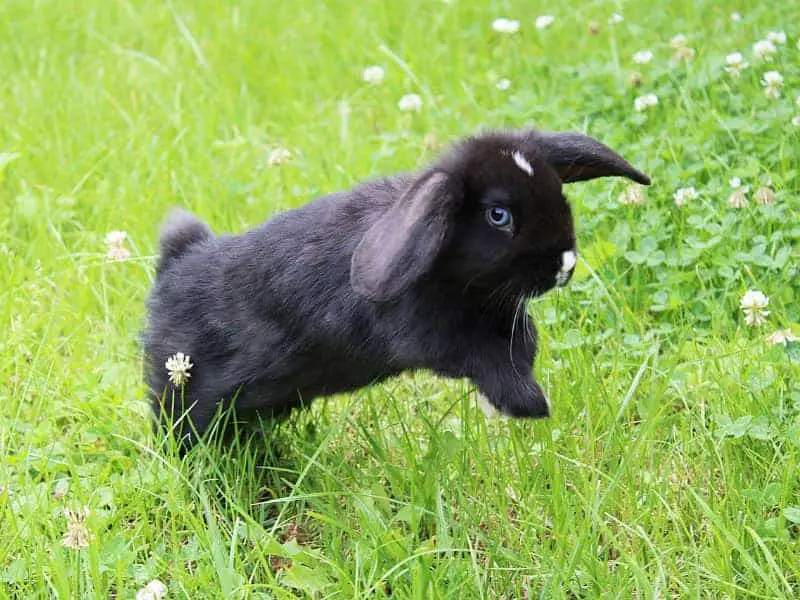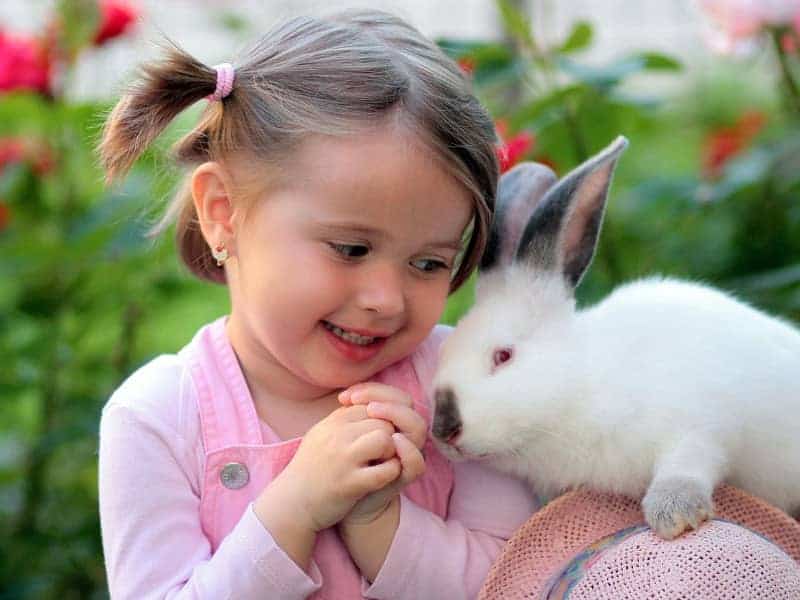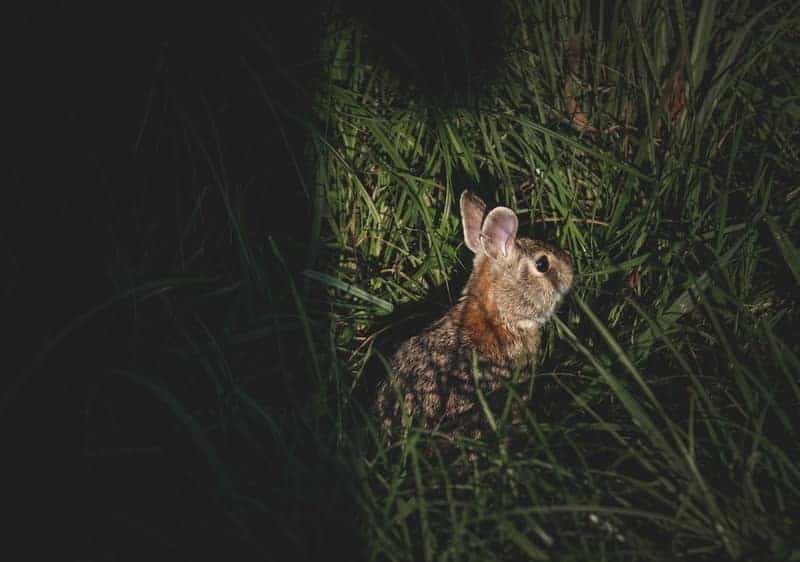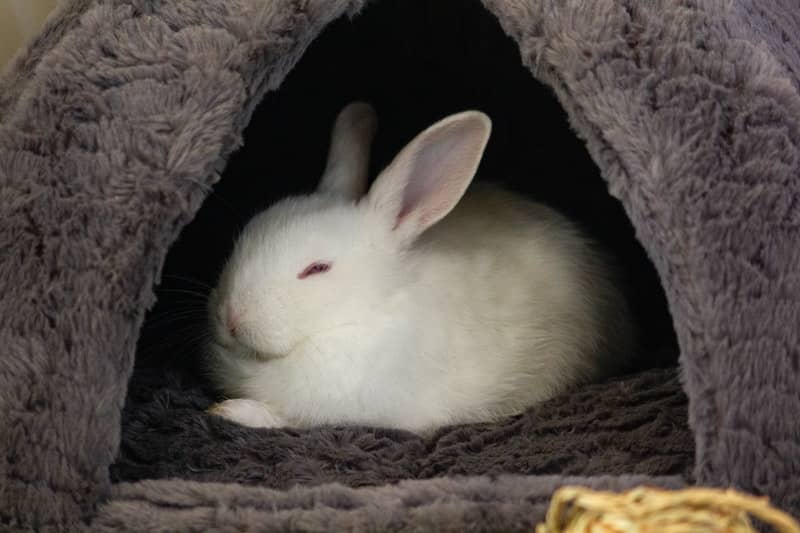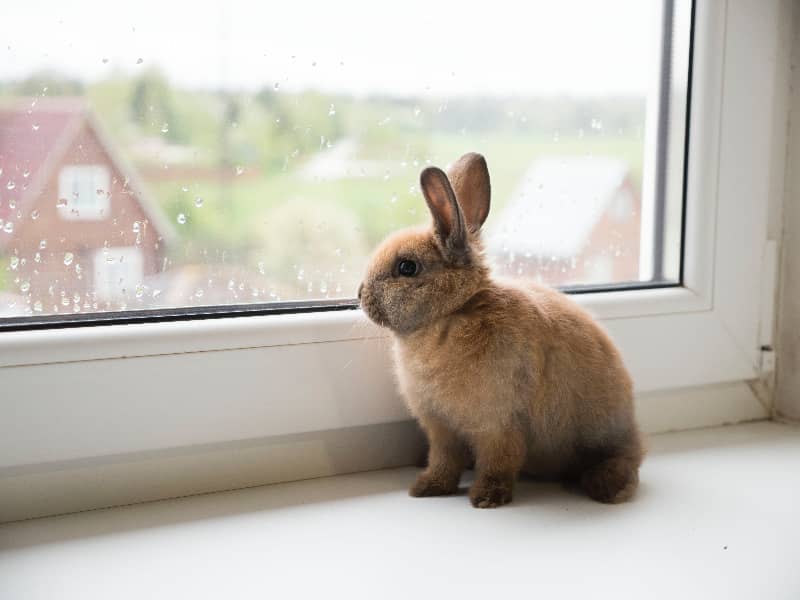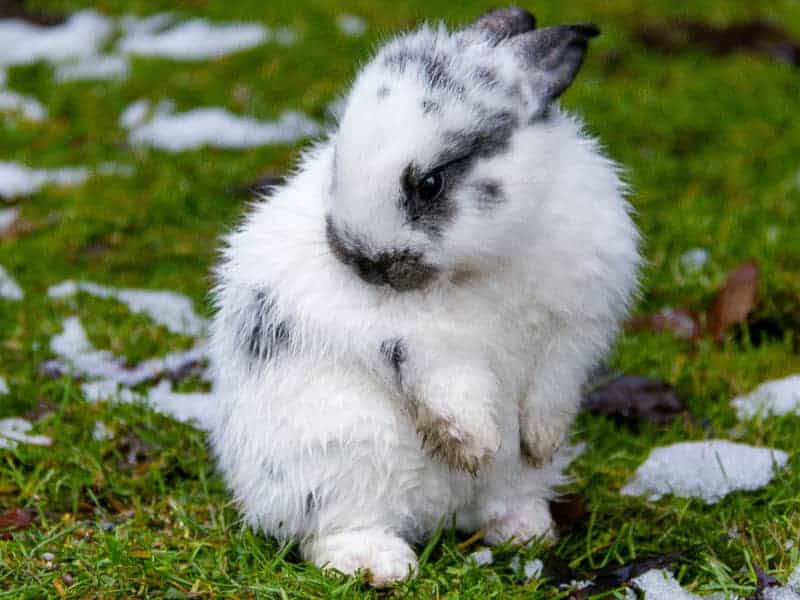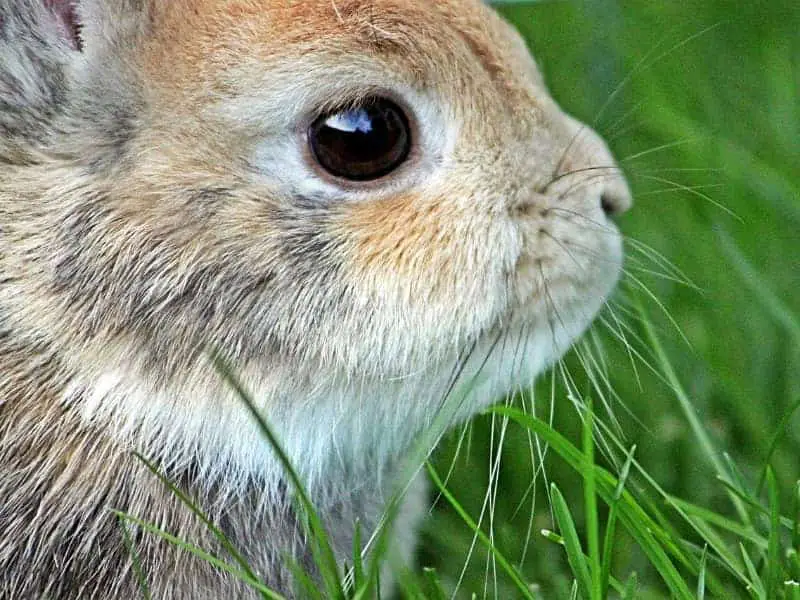
The eyes of the rabbit
Rabbits see the world in a completely different way than we humans do. As a flight animal, they have their eyes on the side of their head and this gives them almost complete all-around vision. There is only one small area that they cannot see. This is directly in front of their nose and a minimal area at the back of their head. This is typical of a flight animal that does not defend itself.
Rabbits are excellent at seeing things that are happening behind them or above them. Just seeing what is happening above is very important for a rabbit. Because from this direction come the most dangerous enemies for the rabbit. However, how well a rabbit sees also has to do with the breed. The longer the fur, the more difficult it is for your rabbit to see all around.
The pupil of your rabbit
While your rabbit's pupil is similar in structure to a human's, there are differences, as you should know to better understand your rabbit. The rabbit's pupil cannot close in a fraction of a second like a human's in order to perceive brightness as non-blinding. This is one reason why rabbits usually avoid too much brightness.
In addition, the lens in rabbits is much less elastic than in humans. As a result, rabbits cannot see as sharply as a human does. Rabbits would be described by an ophthalmologist as farsighted. This means that everything that is in the closer environment is perceived blurred, but things further away are not.
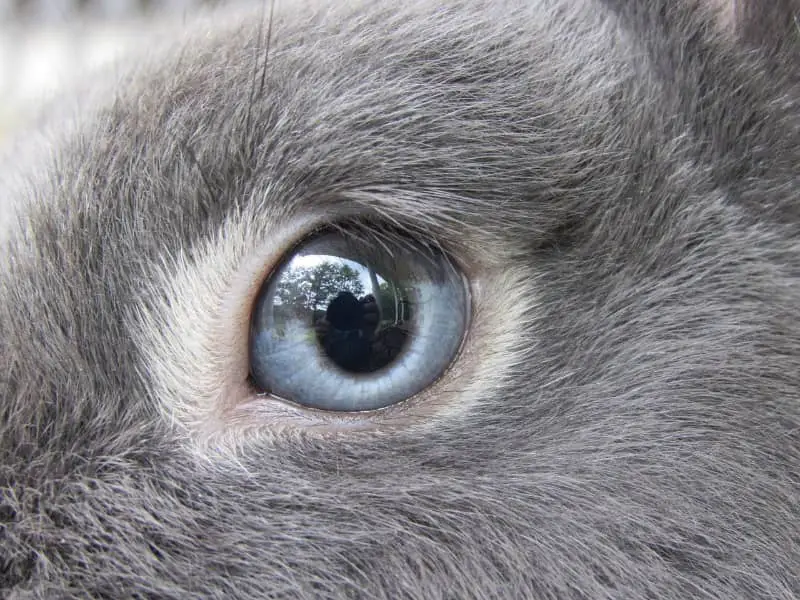
Rabbits and three-dimensional vision
For a living being to see three-dimensionally, i.e. to perceive spatial depth, both eyes must look at the same area. Three-dimensional vision is then possible precisely in this area, since the image is then composed of two independent individual images. In rabbits, however, the fields of vision of the two eyes overlap only at an angle of 30°.
This is only a small fraction of what a rabbit can see at the same time. Thus, rabbits have a hard time judging distances but also speeds correctly. They compensate for this deficit in their eyes by wiggling their heads as they move. This process is called parallax. The further away an object is, the less it moves during this "wobble".
The rabbit at dawn
It is true that the rabbit is somewhat color-blind, since it lacks the receptors for perceiving red tones and thus sees the world in blue and green. However, the rabbit is a twilight specialist and there the colors are far from important. This is the moment when the rabbit's eyes work best.
The reason for this is that in their eyes the number of light-sensitive rods is higher than in diurnal animals. Even when it's the most beautiful sunshine, rabbits don't see very well because they can't contract their pupils and are blinded by bright light. With these special eyes, you can find your way around their rabbit hole and twilight perfectly and were perfectly equipped by nature. Much more important for the rabbits are their nose and ears, because in the darkness of their rabbit hole, these are the more important sensory organs and therefore much better developed than their eyes.
Author

-
Garden animal - A life with nature
Welcome to my animal blog! My name is Dirk and I am happy to take you on my journey through the fascinating world of animals and gardening.
Born 54 years ago, I have had an insatiable curiosity for the animal world around me since childhood. Although I have moved professionally in other industries, my true passion has always been animals and nature. It is remarkable how a small garden has become such an important part of my life.
Many of my fondest memories are associated with the animals that share our home. Whether it's the curious squirrels that scurry across the trees in the morning, the colorful variety of birds that visit our feeders, or the busy bees and butterflies that pollinate our flowers, every moment with them is invaluable to me.
This blog is my contribution to share my experiences, discoveries and insights with like-minded people. Here I will share stories of unforgettable encounters with animals, give tips on gardening and creating wildlife-friendly habitats, and take you on my journeys through nature.
Thank you so much for being here!
Cordial,
Dirk aka garden animal
Last posts
- 27. February 2024PetsVeganes Hundefutter – Grün und Gesund?
- 18. January 2024ChickensOregano für Hühner
- November 27, 2023HamsterDiurnal hamsters
- November 24, 2023HamsterHamster hammock

